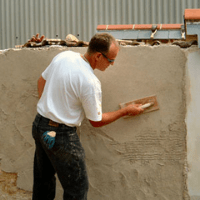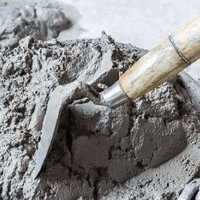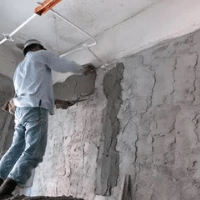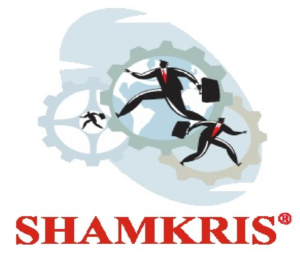Concrete, Cement, Lime Plaster Products Industry
Concrete, Cement, Lime Plaster Products Industry?
Lime has been an important component of mortars for over 2000 years. The characteristics of hydrated lime provide unique benefits in masonry applications that distinguish cement-lime mortars from other masonry mortar materials. Major benefits include:
Flexural bond strength
Cement and Type S Hydrated Lime mortars have been shown to have high levels of flexural bond strength. High tensile bond strength is enhanced by the following properties of cement-lime mortars:
- Tensile Bond Strength – This is the strength of the mortar that holds the masonry units together. High tensile bond strength is developed by the following mortar characteristics:
- Lime provides high water retention that allows for maximum early curing of the cementitious materials.
- High initial flow which permits easy complete coverage of masonry units.
- The low air content of cement-lime mortar increases bond strength.
- Extent of Bond – The extent of bond is the percent of brick to which the mortar adheres. The low air content and the fineness and stickiness of hydrated lime particles increase the extent of bond of mortar to brick. These factors allow cement-lime mortars to penetrate deeply into the brick and seal the brick/mortar interface.
- Durability of Bond – (See Durability section below)
There are a number of studies that demonstrate the superior bond strength of cement-lime mortars. For copies of these studies, pleasecontact Graymont.
Concrete, Cement, Lime Plaster Products

Manufacture of cement

Manufacture of lime and plaster

Manufacture of concrete products for construction purposes

Manufacture of plaster products for construction purposes

Manufacture of ready-mixed concrete

Manufacture of mortars

Manufacture of fibre cement

Manufacture of other articles of concrete, plaster and cement
Role of Shamkris
A Project Report is a document that provides details on the overall picture of the proposed business. The project report gives an account of the project proposal to ascertain the prospects of the proposed plan/activity.
Shamkris will provide a Project report covering Industry License requirements, competitor analysis, Land requirements, machinery requirements, equipment requirements, and financial requirements.
Some of the areas covered in the project report are outlined below:
- Introduction
- Project Description
- Uses and Applications
- Market Survey
- Raw Materials
- Manufacturing Process
- Process Description
- Process Flow Diagram
- Plant Layout
- Details of Plant & Machinery
- Suppliers of Raw Materials
- Suppliers of Plant & Machinery
- Plant Location Factors
- Land & building Required
- Power and Water Required
- Details of Manpower Required
- Financials of the Project
- License and application Certificate
Financials of the Project includes:
- Land and Building Costs
- Plant and Machinery Costs
- Other Fixed Assets
- Fixed Capital Investment
- Raw Material Costs
- Salaries and Wages
- Total Working Capital
- Cost of Project
- Total Capital Investment
- Cost of Production
- Turnover per Annum
- Profitability Analysis
- 5-year Profit Analysis
- Break-even Point
- Resources of Finance
- Cash Flow Statement
- Projected Balance Sheet
FAQ
Lime plaster sets up to a solid mass that is durable yet relatively flexible. Hydraulic lime plaster is not as hard as cement plaster. … Compared to cement plaster, plaster made from hydrated lime is less brittle and less prone to cracking, requiring no expansion joints.
Lime mortar today is primarily used in the conservation of buildings originally built using lime mortar, but may be used as an alternative to ordinary portland cement. It is made principally of lime (hydraulic, or non hydraulic), water and an aggregate such as sand.
